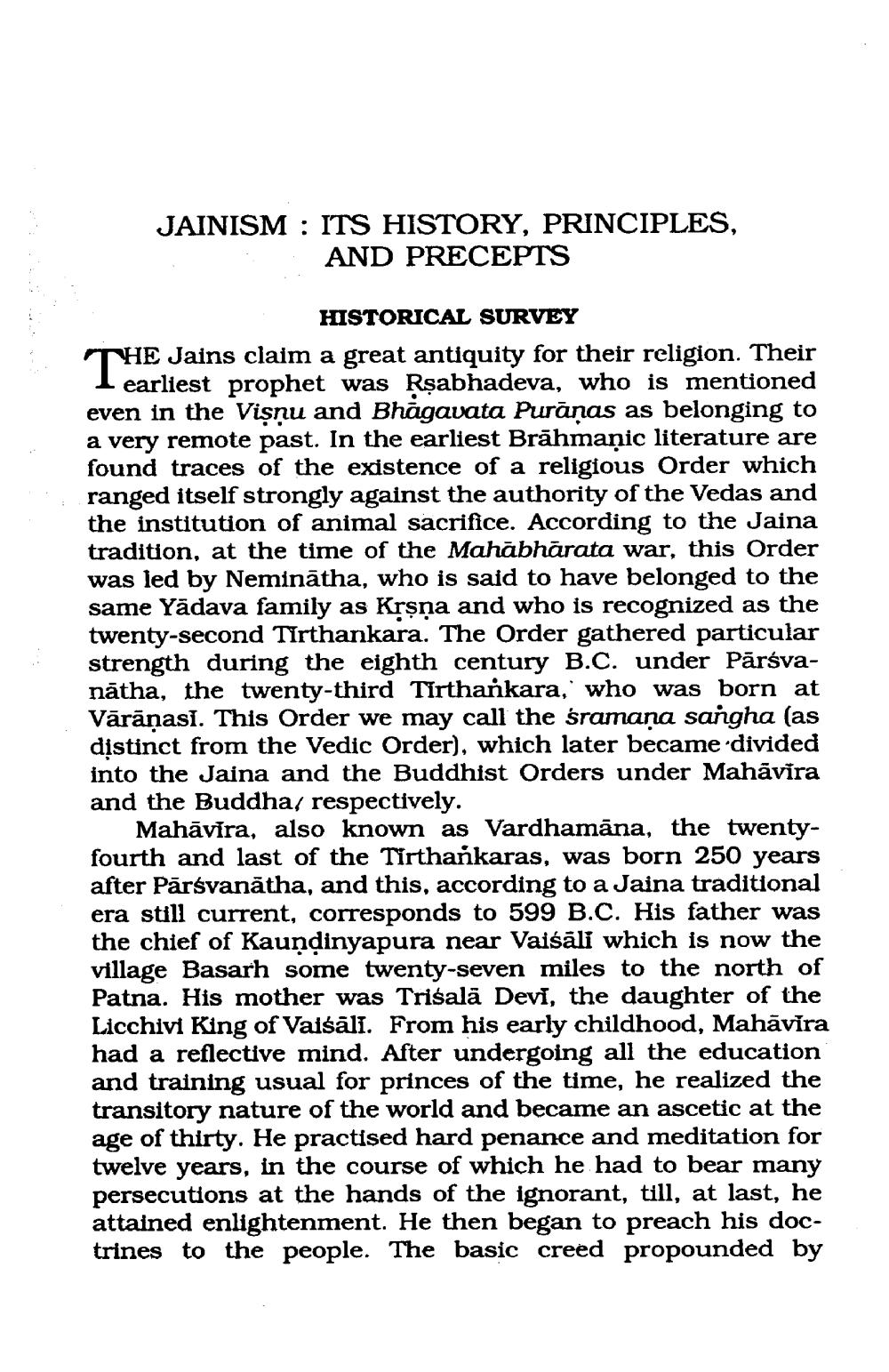________________
JAINISM : ITS HISTORY, PRINCIPLES,
AND PRECEPTS
HISTORICAL SURVEY THE Jains claim a great antiquity for their religion. Their I earliest prophet was Rşabhadeva, who is mentioned even in the Vişnu and Bhagavata Puranas as belonging to a very remote past. In the earliest Brāhmaṇic literature are found traces of the existence of a religious Order which ranged itself strongly against the authority of the Vedas and the institution of animal sacrifice. According to the Jaina tradition, at the time of the Mahābhārata war, this Order was led by Neminātha, who is said to have belonged to the same Yadava family as Krşņa and who is recognized as the twenty-second Tirthankara. The Order gathered particular strength during the eighth century B.C. under Pārsvanātha, the twenty-third Tirthankara,' who was born at Vārānasi. This Order we may call the śramana sangha (as distinct from the Vedic Order), which later became divided into the Jaina and the Buddhist Orders under Mahāvíra and the Buddha, respectively.
Mahāvīra, also known as Vardhamāna, the twentyfourth and last of the Tirthankaras, was born 250 years after Pārsvanātha, and this, according to a Jaina traditional era still current, corresponds to 599 B.C. His father was the chief of Kaundinyapura near Vaiśāli which is now the village Basarh some twenty-seven miles to the north of Patna. His mother was Trisalā Devī, the daughter of the Licchivi King of Vaiśāli. From his early childhood, Mahāvīra had a reflective mind. After undergoing all the education and training usual for princes of the time, he realized the transitory nature of the world and became an ascetic at the age of thirty. He practised hard penance and meditation for twelve years, in the course of which he had to bear many persecutions at the hands of the ignorant, till, at last, he attained enlightenment. He then began to preach his doctrines to the people. The basic creed propounded by




